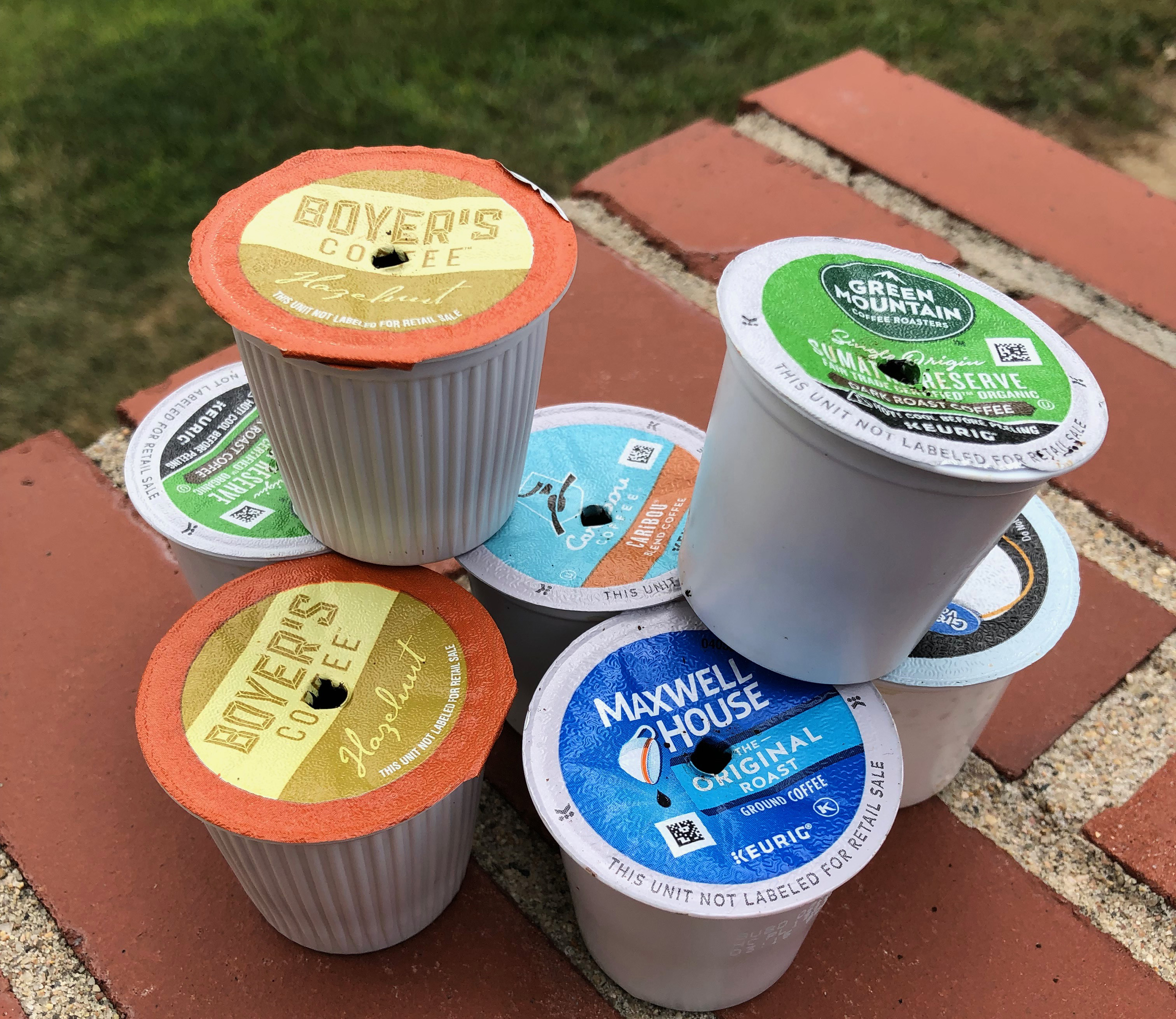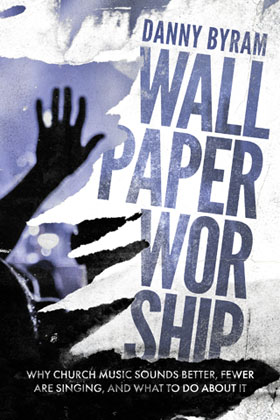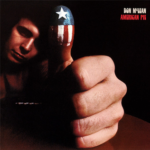
by Danny Byram | Sep 27, 2019 | christian worship, christianmusic, church, Church Leadership, Contemporary, Leadership, Liturgical, pastor, praise, Traditional, wallpaper worship, Worship, worship songs, worshipleader

Each morning I put a K-CUP in my Keurig. It produces a decent single cup of morning coffee experience. Then I prepare one for my spouse. I discard the first one and repeat the process. There have been many times I have stared at the plethora of K-CUPs in my kitchen trash, only to grieve their short-lived lives. If you have tried producing another cup of coffee with a used K-CUP, you know the results are less than satisfying. It’s as if the K-CUP says: “Hey! You already used me. I’m done. Move on!”
Modern worship song repertoire can be like that.
Worship leaders are finding it difficult to keep up with the amount of new songs coming into the marketplace. (CCLI has over 100,000 worship songs in its catalog. Spotify reports 40,000 new songs added daily.) Leaders and congregants can get frustrated because there is not enough time to repeat a song to endear it to the hearts of listeners. Too often the result is silent church-goers staring at song lyrics they heard maybe once, somewhere in their week – or was it from last week’s service? With the barrage of material coming at us, many songs are used once and then discarded. K CUP worship songs.
I recently heard of a pastor who told his music team not to use any songs that are over 6 months old. There are a lot of K-CUPs in that worship leader’s trash. I mean, when was the last time you heard the 1990s hit “Shout To The Lord” used in a worship service? Even though I may hear from someone who used it just last week (bless their heart), the point stands: Worship songs we were singing even a few years ago are long gone, out-mode, like used K CUPS: “Hey! You already used me. I’m done. Move on!”

In my WORSHIP WORSKHOP and in my book WALLPAPER WORSHIP, I emphasize the idea that worship (not simply music) is, among many things, our HERITAGE. Harkening to the past is not anti-contemporary. It is ANAMNESIS, the “art of remembering.” Realized or not, when we worship through music or other rituals, we stand on the shoulders of those who went before us.
The classic hymns were the body of song material used by Protestant churches for centuries. Though there were thousands, not all hymns survived. English hymnwriter Isaac Watts (When I Survey The Wondrous Cross, Joy To The World) wrote over 6,000 in the early 18th century. Fanny Crosby, early 20th century American (Pass Me Not O Gentle Savior, Blessed Assurance) wrote over 9,000. Though much of the hymn repertoire is gone, hundreds remain part of our modern heritage of worship music. With today’s songs so quickly discarded, I often wonder if any of our modern songs will stand the test of time? (Be Thou My Vision is cr. 9th century. How’s that for passing the test of time?)

It’s not just our songs (modern or from antiquity) we’ve discarded. We’ve managed to reduce the communion sacrament to a K-CUP. When pastors fail to explain communion to worshipers, and shrink-wrapped communion cups are offered from a basket somewhere in a corner, the implied message: “Take it at your leisure. Put it under your seat or in your purse for later. Take it in the bathroom, the parking lot, wherever or whenever you want.” The only instruction we actually receive: “Make sure to properly dispose of the shrink wrap and the cup in the trash receptacles.” K-CUP Communion.
If we discard most of the songs of our faith in a few years, and we fail to lead people in worship through the richness of experiencing communion corporately, what other elements of our worship heritage are we willing to discard like K-CUPS?
“All that now is will be forgotten in the days to come.” – Ecclesiastes 2:16 (NKJV)
(Let us read your comments, whether you’re experiencing the KCUP phenomenon OR if your worship situation is balanced and fulfilling.)

by Danny Byram | Jun 4, 2019 | christian worship, christianmusic, Church Leadership, Contemporary, Leadership, Music & Songwriting, pastor, wallpaper worship, Worship, worship songs, worshipleader, worshipmusic

The church in America is in a cycle of prosperity. Impressive church venues are everywhere. Millions of dollars are spent to remodel sanctuaries, build new ones, purchase gear, keep up the latest trends in stage production – live video capturing – and worship song-set automation software. Yet, many who attend services find themselves standing in silence, watching screens, and observing performers on a platform. I call this lack of congregational engagement Wallpaper Worship.
In his endorsement of my book, author Philip Yancey says: “In my lifetime worship has changed from something we do before an audience of God to something a few semi-professionals do for an audience of us.”
C.S. Lewis recognized this problem over 70 years ago: “The perfect church service would be the one we were almost unaware of. Our attention would have been on God. But every novelty prevents this.”
WORSHIP LEADERS: “SOMETHING’S WRONG, BUT WE DON’T KNOW WHAT IT IS.”

In my work with worship leaders across the country, I hear from good-hearted, talented church musicians: “Something is wrong, but we don’t know what it is.”
Let’s consider… The “worship industry” is now a multi-billion-dollar segment of the music and entertainment industry. The American church market purchases over $1.5 billion a year of production gear from audio and video retailers (Music Trades magazine, February 2019). Worship song-publishing/recording companies produce new songs daily, with videos promoting a singular sound – a monochromatic look – and a homogenized form of leading from the platform.
Is this new? Technologically, yes. Historically, no.
Throughout history, expressions of worship were governed by rules which reduced congregational participation to “stare-at-the-platform-and-listen-to-us.” Priests clad in gorgeous attire with elaborate “worship gear” on sanctuary altars, would perform worship for the people. The problem? (There were many…) Leaders led in Latin which most worshipers didn’t speak or read, and congregational participation was allowed only during the Eucharist. The result? Congregants simply watched and listened. Sound familiar?
Even more concerning was when the church found itself relying on monarchies, dynasties and other secular shareholders to promote its mission. The problem? When the church becomes an industry-driven machine – opposed to a spirit-and-truth-driven organism – its message can become diluted and its mission compromised. The result? The message of human fallenness, repentance, redemption, sacrifice, suffering, and sanctification becomes eclipsed with messages of personal actualization, self-healing, and emotional relief from social, political or personal injustices. Sound familiar?
PASTORS TO WORSHIP LEADERS: “MAKE IT LOOK AND SOUND LIKE THAT!”

Leading music in today’s church, even in small rural settings, can quickly become about mimicking the latest worship-industry wave to attract more sheep. Seems like a worthy idea. However, when the worship industry needs and feeds the church, and the church needs and feeds the worship industry – resulting in passive or even frustrated congregants – then something may indeed be wrong.
Pastors or elders will view YouTube videos of arenas full of worship-music fans, with hands in the air, gathered in front of a stage occupied by music professionals – supported by world-class venue production, pristine sound, eye-candy lighting and smoke – and then dictate to their worship leaders: “Your job is to make our Sunday service look and sound like THAT.” After long hours and spent offerings, often the result is local congregants passively watching screens, silently sitting, or leaving for coffee – feeling performed at by musicians they’ve never seen before in their church.
Worship leaders ask: “What do we do now? Bigger production? More expensive effects? Newer songs? Slicker automation? What more do they want? What’s wrong with THEM?” To find relevant answers, perhaps we should ask different questions:
- Do we even believe something is wrong?
- Regarding local church worship: Does one size fit all?
- Is some corporate industry pushing the idea that ‘one size fits all?’
- If so, who and why?
I do not think there is some sinister plan by the music industry to undermine the church it profits from. However, history clearly reveals the church as vulnerable to being wooed from her mission and message, especially when there are billions of dollars involved.
So what’s the SOLUTION? As shepherds of worshipers, our job is to lead in a language our sheep understand and respond to. The Object of our worship said, “My sheep hear my voice and will not follow a hireling.” (John 10). If worshipers are not following, leaders are responsible. Good shepherds will make adjustments on behalf of their sheep (Ezekiel 34) – laying down their own preferences, agendas, and yes – even their lives.
Does one size fit all? What do you think? Please comment below.
Singer/Songwriter/Speaker/Author DANNY BYRAM has performed on over 100 US military installations worldwide since 1987. His work earned him the name “The Combat Musician” from chaplains and troops. Danny also directed 26 Promise Keepers NFL-Stadium events for men, including the Clergy Conference (the largest gathering of clergy in history), and 36 FamilyLife arena events for couples, working alongside Marantha! Music and Integrity Inc. His book: WALLPAPER WORSHIP: Why Church Music Sounds Better, Fewer Are Singing And What To Do About It is available on Amazon, Christian Book Distributors, and from CLCPublications.com. His music is downloadable through iTunes and Spotify.

by Danny Byram | Jan 23, 2019 | christianmusic, Church Leadership, Contemporary, Leadership, pastor, Worship, worshipleader, worshipmusic

In 1959 Vince Lombardi became the new head coach of the losing team known as the Green Bay Packers. The team’s record said it all: only two winning seasons of twelve. Assuming they had a desire to win, the new coach concluded: what they had been doing wasn’t leading them in a winning direction. As he stood before them, he told his players that under his leadership they would return to the fundamentals of the game. He picked up a football and gave what was to become the most famous quote in NFL history: “Gentlemen, this is a football.”
Coach Lombardi’s point was likely met with reluctance and cynicism. But he knew something his players had long forgotten. They had the uniforms, the equipment, the facilities, and the talent, but they were not reaching the goal. Perhaps the players thought being a professional football team was about looking and sounding like one. What they needed was a new game plan that would harness their assets to lead them to where they ultimately wanted to be.
IS THERE A GOAL LINE IN WORSHIP?

Some say “excellence.” Others say “evangelism.” There are lists of virtuous goals worth consideration. But if you are singing your head off, knocking out new charts, keeping up with constantly changing radio hits, auditioning and training volunteers, chasing the latest gear and gadgets – only to watch your congregants staring at you or your screens, and barely moving their mouths – you need a new game plan.
Worship which is real, is worship which is participatory. Participation of congregants or lack of it – is a result of what we do as leaders from the platform. No matter what form through which we lead, whether a weekly liturgy or a musical production with a sermon at the end, participation of those we are leading is our goal line.
Here are three fundamentals of the game I have followed throughout decades of leading worship.
-
CAST A VISION FOR PARTICIPATION

Conditioning our people from observation to participation is a challenge in the age in which we live, but it is imperative. For instance, if our music is deafening so worshipers cannot hear themselves, it may be sending a vibe: “listen to what we know how to do.” Creating a culture of participation will take experimentation and may involve doing some things that are different than you or they are used to. Cast a vision that worship is active and participatory – not passive and observatory. They are waiting to be led.
-
USE YOUR BINOCULARS

When producing stadium events, it was difficult to know if attendees in upper seating sections were participating, since the platform was the size of a postage stamp when viewed from the back. I would step out of my stage-side tent and use binoculars to see if attendees were connecting like those sitting in the front seats. As a leader, you must watch and see what’s happening with those you are to be leading. Proverbs 27:23 says “Know well the condition of your flocks.” If they are not participating, you must change your game plan until they do. Closing your eyes to the problem is denial and poor leadership.
-
PAINT IN MORE THAN ONE COLOR

Ever been to an art gallery with paintings exclusively in yellow? Ever seen a construction crew build a house with simply a hammer and nail? As a church that possesses worship assets for two millennia, I wonder why we habitually paint in only one color and build with only one tool. Give your worshipers a chance to engage with fundamental and even ancient assets of worship. Example: hymns – not hidden in arrangements – just straight up with a modern approach, sing-able, recognizable. I sprinkle them throughout my sets and the reaction is predictable: of course, older worshipers love them. But even cooler when younger ones say: “Dude, that was awesome; did you write that one?” Or, lead them in unison with the Apostle’s Creed or the Nicene Creed or responsively with a portion of scripture that matches a song or the sermon. Whatever you try, don’t forget these additional colors in your palette. Worship is never simply a singular musical style. Worship is an experience tied to a rich heritage. Watch the participation level increase as you paint in bold colors and lead with more than a hammer and a nail.
REACHING THE GOAL LINE

From 1959-1969 under Lombardi’s leadership, the Packers achieved ten consecutive winning seasons; five of which were NFL championship/Superbowl titles. As we watch one football team emerge from 32 to claim the Vince Lombardi trophy, keep in mind it is not simply because they look and sound good. It’s because they perform the fundamentals of the game with diligence and dedication.
If your worshipers are not participating, consider designing a new game plan to get them over the goal line. Worship Leaders, “this is a football.”






















